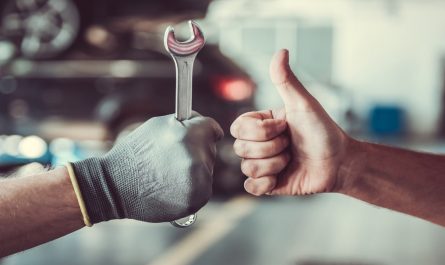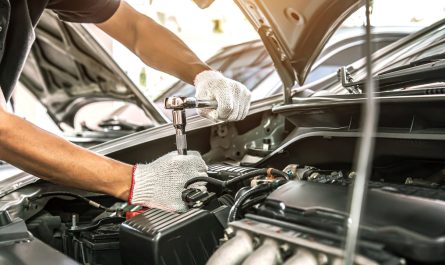Introduction to DIY Car Maintenance
In recent years, DIY car maintenance has gained significant popularity among vehicle owners. This trend reflects a growing desire among individuals to take control of their automotive needs, fostering a sense of empowerment that comes from understanding and overseeing the care of their vehicles. As car owners recognize the numerous benefits of engaging in do-it-yourself repairs and servicing, they are increasingly willing to invest time and effort into acquiring basic maintenance skills.
One of the primary advantages of DIY car maintenance is cost savings. Routine vehicle servicing, including oil changes, filter replacements, and minor repairs, can often lead to substantial expenses when performed at a professional garage. However, many of these maintenance tasks can be completed at home with the right tools and a little know-how. By familiarizing themselves with their vehicles, car owners can take charge of these necessary tasks, ultimately leading to significant financial savings over time.
Furthermore, engaging in DIY maintenance fosters a deeper understanding of one’s vehicle. As car owners learn to perform tasks such as checking fluid levels, rotating tires, and changing spark plugs, they become more attuned to how their vehicle operates. This knowledge empowers them to recognize and address issues that may arise, often preventing minor problems from escalating into major repairs. Such proactive awareness can enhance both the performance and longevity of the vehicle.
Additionally, the satisfaction derived from completing repairs independently cannot be understated. The sense of accomplishment that comes from resolving an issue or successfully maintaining one’s vehicle instills confidence and encourages further involvement in DIY car maintenance. This mindset not only nurtures a practical skill set but also cultivates a deeper appreciation for the intricacies of automotive mechanics. As such, embracing DIY car maintenance can be both empowering and rewarding for car owners.
Essential Tools and Supplies for Car Maintenance
When embarking on DIY car maintenance, having the right tools and supplies is crucial for achieving optimal results and ensuring safety. Comprehensive car maintenance requires a variety of essential tools that enable you to tackle common tasks effectively. A well-stocked toolbox is your best ally in making car upkeep both efficient and cost-effective.
First and foremost, a set of wrenches, preferably both metric and standard, is indispensable. They come in handy for loosening and tightening bolts across various components of your vehicle. Additionally, socket sets are invaluable for accessing hard-to-reach areas. Invest in a reliable torque wrench; this allows you to apply the correct tension to bolts, which is essential for avoiding damage during assembly.
A sturdy jack and jack stands are necessary for lifting the vehicle during tasks such as oil changes or tire rotations. It is vital to select a jack that meets your vehicle’s weight specifications. Oil filters and high-quality motor oil should also be prioritized for regular oil changes, a fundamental aspect of car maintenance that contributes to engine longevity.
In terms of safety, personal protection equipment cannot be overlooked. Use mechanic’s gloves and safety glasses to shield your hands and eyes from oils, grease, and potential flying debris. These items help maintain safety while working on your vehicle.
As you gather your tools, consider purchasing from reputable automotive supply stores or online retailers that specialize in high-quality products. Look for tools with warranties, signifying durability and reliability. Prioritizing quality over cost when selecting your tools and supplies will ensure they stand the test of time. By being adequately equipped, you will be well on your way to successfully executing your DIY car maintenance projects.
Preventive Maintenance: Steps to Keep Your Car Running Smoothly
Preventive maintenance is essential for ensuring your vehicle operates efficiently and extends its life. By adhering to a regular maintenance schedule, you can significantly reduce the chances of unexpected breakdowns and costly repairs. The core aspects of preventive maintenance include regular oil changes, tire rotations, fluid checks, filter replacements, and brake inspections.
Starting with oil changes, it is crucial to replace your engine oil and oil filter at recommended intervals, typically every 5,000 to 7,500 miles, depending on your vehicle’s make and model. Fresh oil lubricates the engine components, reduces friction, and removes contaminants. Be aware of the signs indicating that an oil change is needed, such as a decrease in engine performance or discolored oil on the dipstick.
Tire rotations should be performed every 5,000 to 7,500 miles. This practice ensures even wear of your tires and improves traction, handling, and fuel efficiency. Keep a close eye on tire pressure and tread depth, as low tire pressure or worn-out treads can affect the safety and performance of your vehicle.
Additionally, regular fluid checks are vital. Monitor levels of coolant, brake fluid, transmission fluid, and power steering fluid. Low fluid levels can lead to mechanical issues or even complete system failure. It’s advisable to check these fluids monthly and top them off as needed.
Filter replacements, including air and fuel filters, should occur based on your vehicle’s service manual recommendations, usually around every 15,000 to 30,000 miles. Good filters help maintain performance and prolong the life of your engine.
Lastly, brake inspections are critical for safety. Inspect your brake pads and rotors approximately every 10,000 miles. Signs such as squeaking noises, vibrations, or decreased responsiveness indicate that service is needed. By addressing these preventive maintenance tasks proactively, you can ensure your car continues to drive smoothly and reliably.
Troubleshooting Common Issues and When to Seek Professional Help
Car troubles can manifest in various ways, and identifying the problem swiftly is essential in determining whether the issue can be resolved through DIY methods or if professional intervention is necessary. One of the most common indicators of car issues is the appearance of warning lights on the dashboard. These lights, such as the check engine or oil warning light, serve as alerts to underlying problems. If a warning light activates, it is advisable to consult the owner’s manual, as it provides specific information regarding the issue. In some cases, a simple reset may resolve the concern, while in others, further diagnostics are necessary.
Another frequent issue is strange noises emanating from the vehicle. Unusual sounds, such as grinding, rattling, or squeaking, can suggest various problems. For example, a grinding noise while braking may indicate worn brake pads, necessitating immediate attention. Conversely, a gentle squeaking might be a sign of minor issues that can often be addressed through basic maintenance tasks. It is important to pay close attention to these sounds and categorize them accordingly, as ignoring them can lead to more severe problems down the line.
Drivers may also experience poor performance, such as decreased fuel efficiency or sluggish acceleration. In some situations, routine maintenance like replacing the air filter or checking tire pressure can resolve these issues. However, if performance does not improve after performing basic maintenance, it may signal a deeper issue that requires professional expertise. When assessing whether to seek professional help, it is vital to consider the complexity of the problem and one’s comfort level in dealing with automotive repairs.
To make informed decisions regarding car troubles, it is beneficial to conduct thorough research on common automotive issues and seek trustworthy repair services. Online forums, mechanic reviews, and manufacturer recommendations can provide valuable insights. By leveraging these resources, drivers can ensure they are equipped to handle car maintenance effectively and know when to contact a professional mechanic.


